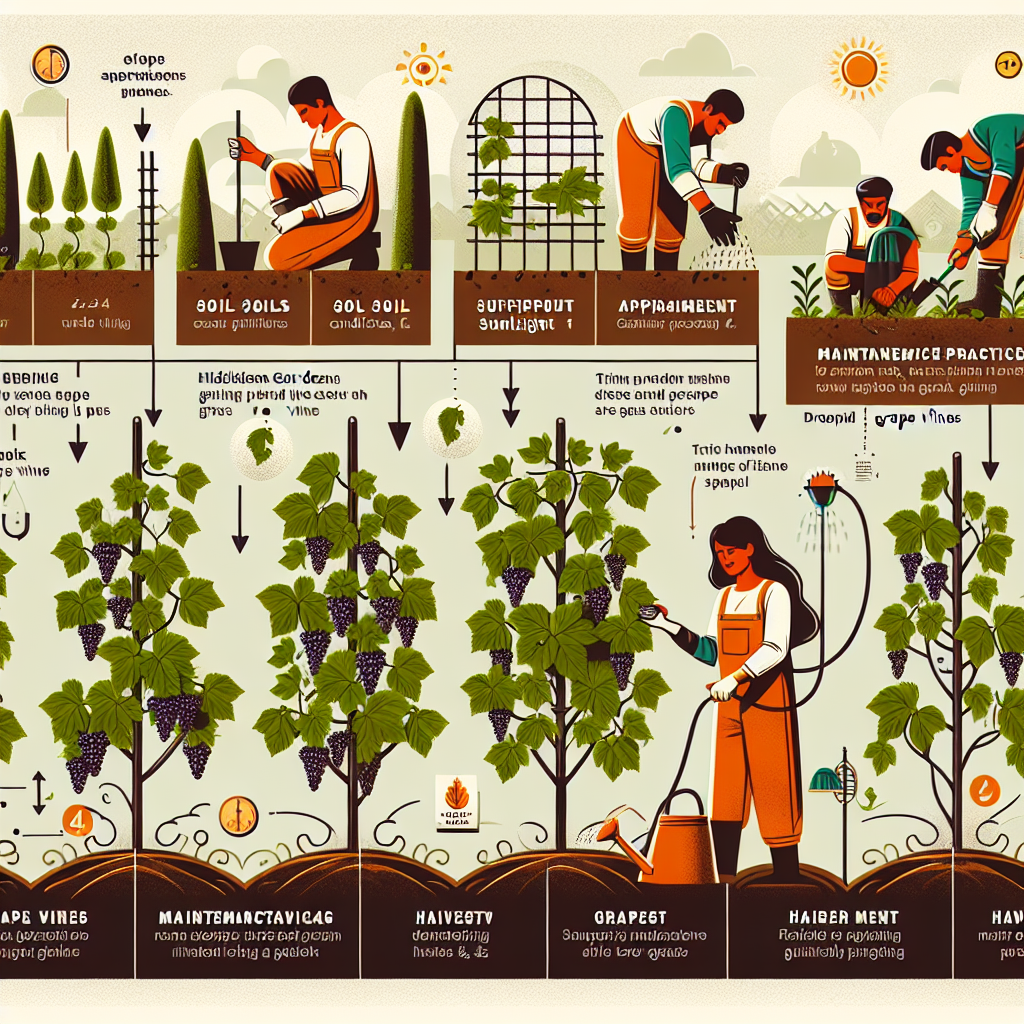
How to grow grapes
How to Successfully Grow Grapes: A Comprehensive Guide
Growing grapes can be a rewarding venture, whether you’re looking to produce wine, make your own preserves, or simply enjoy fresh fruit from your backyard. Understanding the best practices and essential requirements for grape cultivation will set you on the path to success. In this guide, we will explore everything you need to know about grapes, from selecting the right variety to managing pests and diseases.
Understanding Grape Varieties
The first step in how to grow grapes is to choose the right variety for your climate and purpose. Grapes can generally be classified into three categories: table grapes, wine grapes, and raisin grapes.
Table Grapes
Table grapes are cultivated primarily for fresh consumption. They are usually seedless and have a sweet flavor profile. Popular varieties include:
- Thompson Seedless
- Flame Seedless
- Concord
Wine Grapes
Wine grapes possess specific characteristics that make them suitable for fermentation. Essential wine grape varieties consist of:
- Cabernet Sauvignon
- Chardonnay
- Merlot
Raisin Grapes
Raisin grapes are specially bred for drying and have a higher sugar content. Notable varieties include:
- Sultana
- Thompson Seedless
Choosing the Right Location
The success of growing grapes largely depends on their growing environment. Here are some key factors to consider when selecting a suitable location:
- Sunlight: Grapes thrive in sunny locations. Aim for at least 6-8 hours of direct sunlight daily.
- Soil: Well-drained, sandy loam soils are ideal. Test the soil pH; grapes prefer a pH between 5.5 and 7.0.
- Drainage: Poor drainage can lead to root rot, so ensure proper ground drainage.
Preparing the Soil
Before planting, it is crucial to prepare the soil adequately. Here’s a step-by-step guide:
- Conduct a soil test to assess nutrient levels and pH.
- Clear the area of weeds, rocks, and debris.
- Till the soil to a depth of about 12 inches to aerate.
- Amend the soil with well-rotted manure or compost to improve fertility.
Planting Grapes: A Step-by-Step Guide
Once the soil is prepared, it’s time to plant. Here’s how:
- Select Your Grapevines: Choose healthy, disease-free vines from a reputable nursery.
- Timing: Plant your grapes in early spring or late fall, depending on your climate.
- Planting Depth: Dig a hole large enough for the root system, typically about 2 feet wide and deep. Place the vine in the hole with the roots spread out, and cover with soil.
- Watering: Water thoroughly to help settle the soil around the roots.
Caring for Your Grapevines
Proper care is essential for healthy grapevines. Here are some crucial components of grapevine care:
Watering
Water your grapevines regularly, especially during dry spells. However, avoid over-watering, which can lead to root rot. A general rule of thumb is to provide about 1 inch of water weekly.
Fertilizing
Fertilization should be based on soil test results. In general, it’s advisable to fertilize in early spring before growth begins, using a balanced fertilizer. Follow these guidelines:
- Use a nitrogen-rich fertilizer for young vines.
- For mature vines, switch to a low-nitrogen fertilizer that is high in phosphorus and potassium.
Pruning
Pruning is vital for maintaining vine health and maximizing fruit production. Here are some pruning tips:
- Prune in late winter or early spring when the vines are dormant.
- Remove any dead or diseased wood.
- Thin out overly dense areas to improve air circulation.
- Train the vines onto a trellis or support system to encourage upward growth.
Pest and Disease Management
Like any crops, grapevines are vulnerable to pests and diseases. Implementing preventive measures and being proactive can help ensure your grapes remain healthy:
Common Pests
Some common grape pests to watch out for include:
- Japanese Beetles
- Leafhoppers
- Spider Mites
Common Diseases
Be vigilant for these common grape diseases:
- Powdery Mildew
- Botrytis Bunch Rot
- Downy Mildew
To control these issues, consider the following strategies:
- Regularly inspect your vines and remove infected areas immediately.
- Maintain proper spacing and air circulation to reduce humidity.
- Use organic pesticides or fungicides as needed, following all label instructions.
Harvesting Your Grapes
Knowing when to harvest is crucial. Grapes are typically ready for harvest in late summer to early fall, depending on the variety. Here are some signs that indicate your grapes are ripe:
- Color change: Varieties show distinct color variations when ripe.
- Taste test: Sampling a few grapes can confirm sweetness and flavor.
- Easy detachment: Ripe grapes should come off the stem with gentle pulling.
Storing and Using Your Grapes
Once harvested, store your grapes properly to extend their freshness. Here are some storage tips:
- Keep grapes in the refrigerator in a breathable container.
- Wash only before consuming to prevent moisture buildup that can lead to spoilage.
- Consider freezing grapes for smoothies or as a refreshing snack.
Additionally, let’s explore some delicious uses for your fresh grapes:
- Making homemade jelly or jam.
- Crafting grape juice or wine.
- Using grapes in salads or as a snack with cheese.
Conclusion
In summary, learning how to grow grapes requires commitment and knowledge. By selecting the right variety, preparing the soil, providing proper care, and managing pests effectively, you can enjoy a bountiful grape harvest. The joy of picking and enjoying your homegrown grapes, whether for fresh eating or for crafting your own wine, is an experience worth every effort. Happy grape growing!
By Guest, Published on October 5th, 2024